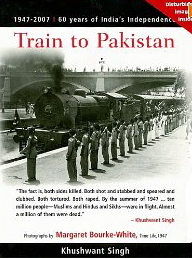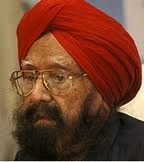Explosive–and heart-rending for what was lost.
 When the monsoon rains wash a whole village of massacred babies, men, and women down the swollen river and past a small, peaceful community on India’s border with the newly created Pakistani state, the residents of the village are aghast. When whole trains of newly slaughtered Sikhs and Hindus, not a passenger still alive, start arriving in their village from Muslim Pakistan, they hastily cremate and bury the remains, then retire to the temple in shock. When their own Muslim friends from the village are forcibly evacuated to Pakistan on ten minutes’ notice, the villagers know that the fabric of their lives is changed forever.
When the monsoon rains wash a whole village of massacred babies, men, and women down the swollen river and past a small, peaceful community on India’s border with the newly created Pakistani state, the residents of the village are aghast. When whole trains of newly slaughtered Sikhs and Hindus, not a passenger still alive, start arriving in their village from Muslim Pakistan, they hastily cremate and bury the remains, then retire to the temple in shock. When their own Muslim friends from the village are forcibly evacuated to Pakistan on ten minutes’ notice, the villagers know that the fabric of their lives is changed forever.
With the immediacy of an on-the-spot observer to these events of 1947 and the passion of a sensitive writer impelled to tell a story, Singh mourns the seemingly permanent loss of compassion and tolerance which accompanied the separation of the Indian subcontinent into Hindu/Sikh India and Muslim Pakistan. His novel, written less than ten years after some of the events which are chronicled here, is filled with vibrant and realistic characters sometimes forced to make impossible decisions, characters who reflect the horrors of religious intolerance, which flourished when artificial boundaries were set up to divide India by religions. The book cries out against the losses of civility, tolerance, and life itself.
With his love story of a Sikh dacoit and a Muslim weaver’s daughter, told within an elegaic  portrait of peaceful village life suddenly altered by religious strife, Singh draws the reader into the world of Mano Majra and its contrasts. He peppers the narrative with manipulative and grasping government officials and police, and outside agitators preying on residents’ insecurities. The small world he creates so vividly becomes a microcosm through which the reader gains knowledge of the wider issues.
portrait of peaceful village life suddenly altered by religious strife, Singh draws the reader into the world of Mano Majra and its contrasts. He peppers the narrative with manipulative and grasping government officials and police, and outside agitators preying on residents’ insecurities. The small world he creates so vividly becomes a microcosm through which the reader gains knowledge of the wider issues.
Most remarkably, Singh holds himself above the ethnic and religious fray, reflecting his equal abhorrence of the Muslim atrocities and the Sikh response, “For each Hindu or Sikh they kill, kill two Mussulmans.” Singh, writing this book in 1956, dramatically foreshadows the violence which has continued in this area to the present day. He makes us feel the sadness and the permanent loss to all the participants on all sides of this tragic conflict.
Notes: The author’s photo accompanies a story in the New York Times about the newest edition of this book, including sixty-six pictures by famed photographer Margaret Bourke-White, the edition shown here in the book cover. http://www.nytimes.com/
